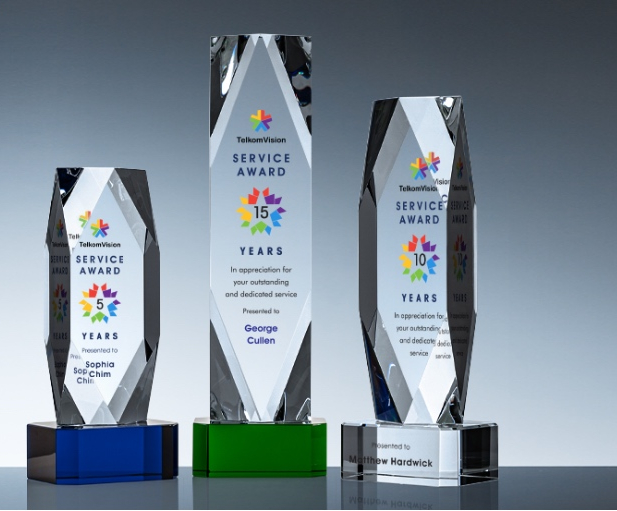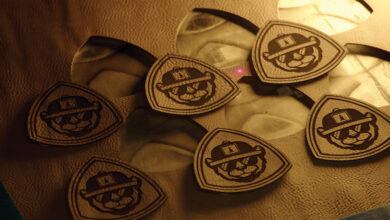Technically the difference is determined by a refractive index scale. This scale determines the clarity level of a product. Crystal (depending on the quality) has a relatively high refractive index, whereas glass has a lower value. A high index reading (of above 1.5) is generally considered crystal, and below this, it is glass.
The refractive index scale determines the clarity of any clear material by its ability to transmit light through it or deflect light traveling at it, at the speed of light. Glass generally has a refractive index of 1.46 or lower, and optic crystal is 1.52 and higher. By comparison, a cut diamond has an index of 2.42. Now for the non-technical version …
Crystal
Crystal is produced in two basic types: soft and hard. Soft crystal is known universally as lead crystal. Lead oxide of up to 35% is added to this crystal to soften it and to allow it to be formed, blown, or molded easily. The lead oxide also gives the crystal a beautiful sparkle. It is easy to grind and polish patterns with. Full lead crystal must have at least a 24% lead oxide content to use this name. Lead crystal is most commonly used for bowls, vases, and molded shapes. It is a very clear product.
Hard crystal is used primarily for optical requirements. It is commonly called optic crystal, but its true name is opthalmic crystal or crown glass. Its hardness and high clarity make it ideal for producing telescope and camera lenses. In 1996, optic crystal (made only in the U.S. and Europe) was first introduced commercially to the award and recognition industry but with limited success due to the very high cost. Not long after this, China started producing less expensive versions of optic crystal known today as K9. Today, almost all optic crystal products are made from K9. However, the quality of this crystal varies widely. The higher the cost, the better the quality will be. At the lower end of the cost range, K9 crystal will have no UV (ultraviolet) light resistance and will turn yellow if exposed to any UV light.
Glass
Glass is an extremely hard material commonly used in the trophy, award, and recognition industry. Known as flat glass, it is available with a green tint, referred to as Jade glass, or in clear glass with a slight blue tint, known as crystal clear glass. Glass with other tints (gray, bronze, black, and blue) are also available.
Jade glass gets its green tint from an iron ore content inherent in the silica sand used to produce flat glass. Crystal clear glass (also known as low iron glass) uses more pure silica sand with virtually no iron ore content. It is also a very hard glass. Premium quality crystal clear glass is almost as clear as optic crystal, but it is not actually crystal. Crystal clear glass is a preferred product for etching and color filling applications as it’s clarity is excellent at a reasonable price.




